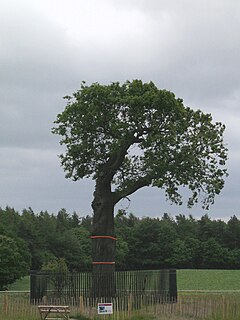
The Royal Oak is the English oak tree within which the future King Charles II of England hid to escape the Roundheads following the Battle of Worcester in 1651. The tree was in Boscobel Wood, which was part of the park of Boscobel House. Charles told Samuel Pepys in 1680 that while he was hiding in the tree, a Parliamentarian soldier passed directly below it. The story was popular after the Restoration, and is remembered every year in the English traditions of Royal Oak Day.

South Staffordshire is a local government district in Staffordshire, England. The district lies to the north and west of the West Midlands county, bordering Shropshire to the west and Worcestershire to the south. It contains no towns of major size, and many of the settlements within the district are considered dormitory villages for Stafford, Telford, and the West Midlands conurbation.

Chillington Hall is a Georgian country house near Brewood, Staffordshire, England, four miles northwest of Wolverhampton. It is the residence of the Giffard family. The Grade I listed house was designed by Francis Smith in 1724 and John Soane in 1785. The park and lake were landscaped by Capability Brown.

Keele is a village and civil parish in northern Staffordshire, England. It is approximately three miles (5 km) west of Newcastle-under-Lyme, and is close to the village of Silverdale. Keele lies on the A53 road from Newcastle-under-Lyme to Market Drayton and Shrewsbury. The village is the location of Keele University and Keele Services, a motorway service area on the M6.
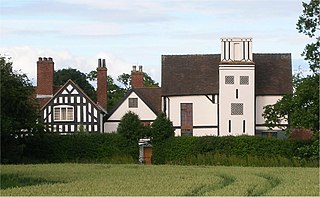
Boscobel is a civil parish in the east of Shropshire, England, on the border with Staffordshire. To the north is the Staffordshire village of Bishops Wood.

The Monarch's Way is a 625-mile (1,006 km) long-distance footpath in England that approximates the escape route taken by King Charles II in 1651 after being defeated in the Battle of Worcester. It runs from Worcester via Bristol and Yeovil to Brighton. All of the footpath is waymarked. The waymark is yellow and shows a picture of the ship Surprise above the Prince of Wales three-point feathered crown which is superimposed on a Royal Oak tree in black.

Savernake Forest stands on a Cretaceous chalk plateau between Marlborough and Great Bedwyn in Wiltshire, England. Its area is approximately 4,500 acres.
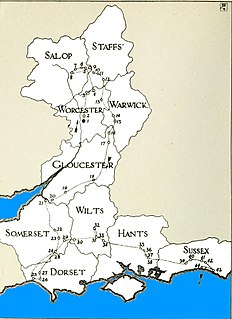
The escape of Charles II from England in 1651 was a key episode in his life. The retreat started with the Royalist defeat at Battle of Worcester on 3 September 1651 when Charles was forced to flee. He had many adventures, most famously hiding up an oak tree in Boscobel Wood, before setting sail at 2:00am on 15 October from Shoreham-by-Sea and arriving in France the following day. Although only taking six weeks, it had a major effect on his attitudes for the rest of his life.
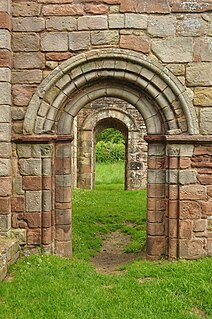
White Ladies Priory, once the Priory of St Leonard at Brewood, was an English priory of Augustinian canonesses, now in ruins, in Shropshire, in the parish of Boscobel, some eight miles (13 km) northwest of Wolverhampton, near Junction 3 of the M54 motorway. Dissolved in 1536, it became famous for its role in the escape of Charles II of England after the Battle of Worcester in 1651. The name 'White Ladies' refers to the canonesses who lived there and who wore white religious habits.

The River Penk is a small river flowing through Staffordshire, England. Its course is mainly within South Staffordshire, and it drains most of the northern part of that district, together with some adjoining areas of Cannock Chase, Stafford, Wolverhampton, and Shropshire. It flows into the River Sow, which is a tributary of the River Trent, so its waters flow ultimately into the North Sea via the Humber Estuary.

Caverswall is a village and parish in Staffordshire, to the south west of Staffordshire Moorlands. The population of the civil parish at the 2011 census was 971.

Coven is a village in the district of South Staffordshire, England, near to the border with Wolverhampton. Together with Brewood it forms part of the parish of Brewood & Coven.

Colonel William Careless was a Royalist officer of the English Civil War. It has been estimated in various written sources that he was born c. 1620, however, it is more likely that he was born c. 1610. He was the second son of John Careless of Broom Hall, Brewood, Staffordshire. He is chiefly remembered as the companion of King Charles II when the fugitive monarch hid in the Royal Oak following his defeat at the Battle of Worcester. His surname was changed to Carlos, the Spanish for Charles, by order of Charles II. He died in 1689.

Black Ladies Priory was a house of Benedictine nuns, located about 4 km west of Brewood in Staffordshire, on the northern edge of the hamlet of Kiddemore Green. Founded in the mid-12th century, it was a small, often struggling, house. It was dissolved in 1538, and a large house was built on the site in Tudor and Jacobean styles by the Giffard family of Chillington Hall. Much of this is incorporated in the present Black Ladies, a large, Grade II*-listed, private residence.
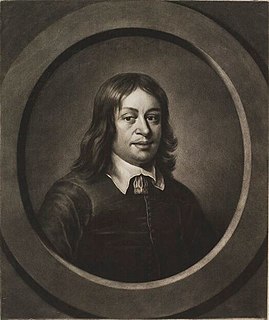
Richard Penderel was a Roman Catholic farmer, and a supporter of the Royalist cause during the English Civil War. He assisted with the escape of Charles II after the Battle of Worcester in September 1651.

St Paul’s Church, Coven is a Grade II listed parish church in the Church of England in Coven, Staffordshire
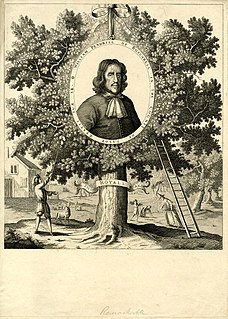
William Pendrill was a Roman Catholic and royalist in the English Civil War.
Brewood and Coven is a civil parish in the district of South Staffordshire, Staffordshire, England. It contains 135 listed buildings that are recorded in the National Heritage List for England. Of these, three are listed at Grade I, the highest of the three grades, eleven are at Grade II*, the middle grade, and the others are at Grade II, the lowest grade. The parish contains the villages of Brewood, Coven, and Bishops Wood and the surrounding area. In the parish are three country houses, which are listed together with buildings in their grounds and estates. Two canals run through the parish, the Shropshire Union Canal and the Staffordshire and Worcestershire Canal, and the listed buildings associated with these are bridges, mileposts, and an aqueduct. Most of the other listed buildings are houses and associated structures, cottages, farmhouses, farm buildings, shops and offices, the earlier of which are timber framed or have timber framed cores. The other listed buildings include churches and associated structures, monuments in a churchyard, a holy well, road bridges, a public house, a war memorial, and a telephone kiosk.




















